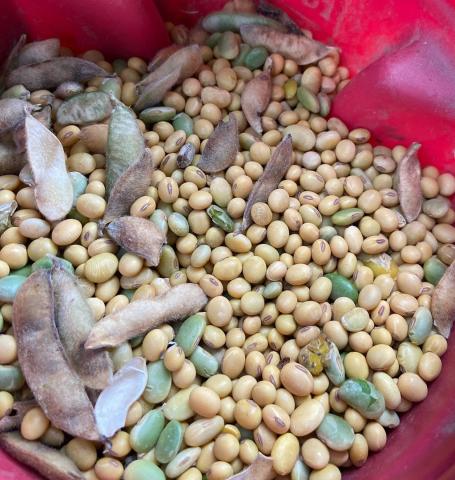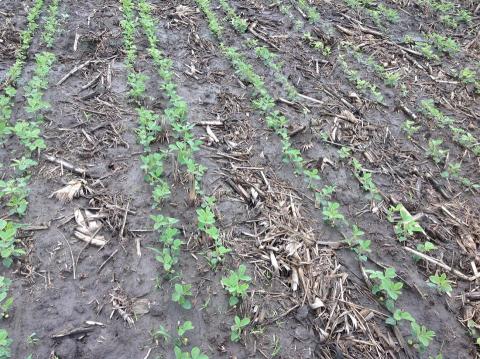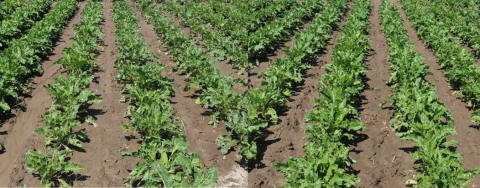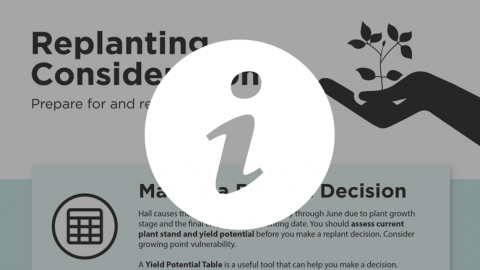Follow-up from July 2023 Hailstorms to Soybean
June 20, 2024
This article reviews the yield results of five replanted Nebraska soybean fields following hail damage in 2023, which may assist soybean growers currently considering relative maturities in their replant decisions.
Extension Crop and Pest Reports (June 3-7)
June 7, 2024
Extension educators share their observations in Nebraska fields this week.
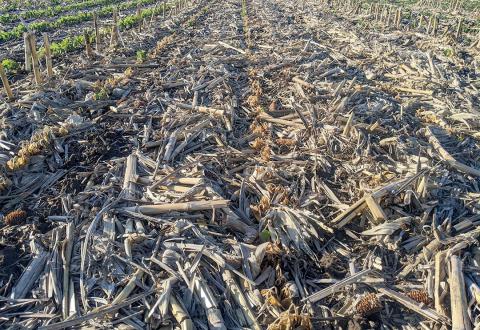
Assessing Plant Recovery and Replant Considerations
May 27, 2022
Nebraska Extension recommendations on evaluating fields that were affected by crusting, hail, wind and frost damage this past week in order to make plant recovery or replant decisions.
Soybean Replanting Considerations
May 15, 2020
With the recent cold temperatures and frost in portions of the State, some are questioning the need to replant soybean. It’s important to assess potential recovery before making replant decisions. Soybeans are more resilient than one may think!
Replanting Corn: Things To Do and Think About
May 24, 2024
Recent flooding events beginning May 20-21, 2024 in portions of the state have some concerned about the need to replant corn when waters recede. It’s important to assess potential recovery before making replant decisions.
When To Replant Sugarbeets: The Relationship Between Population, Yield, And Replant Timing
January 8, 2018
An article from the Proceedings of the 2018 Nebraska Extension Crop Production Clinics: Early season stand loss from wind or frost can be severe enough to require replanting of a sugarbeet crop. Three years of field trials at the Panhandle Research and Extension Center were conducted to determine just how much stands need to be reduced to justify replanting.
Video: Replanting Considerations
The decision to replant after hail can be difficult and is often unclear, especially when hail occurs in late May through June. Will the current crop recover and provide a reasonable yield? Will replanting offer a better yield? This video explores how to assess stand injury and yield potential as well as other factors to consider.
Infographic: Replanting Considerations
Hail causes the most uncertainty in late May through June due to plant growth stage and the final crop insurance planting date. During this time, many farmers find themselves asking the replant question. This infographic highlights what factors to consider when making the decision to replant or not.
